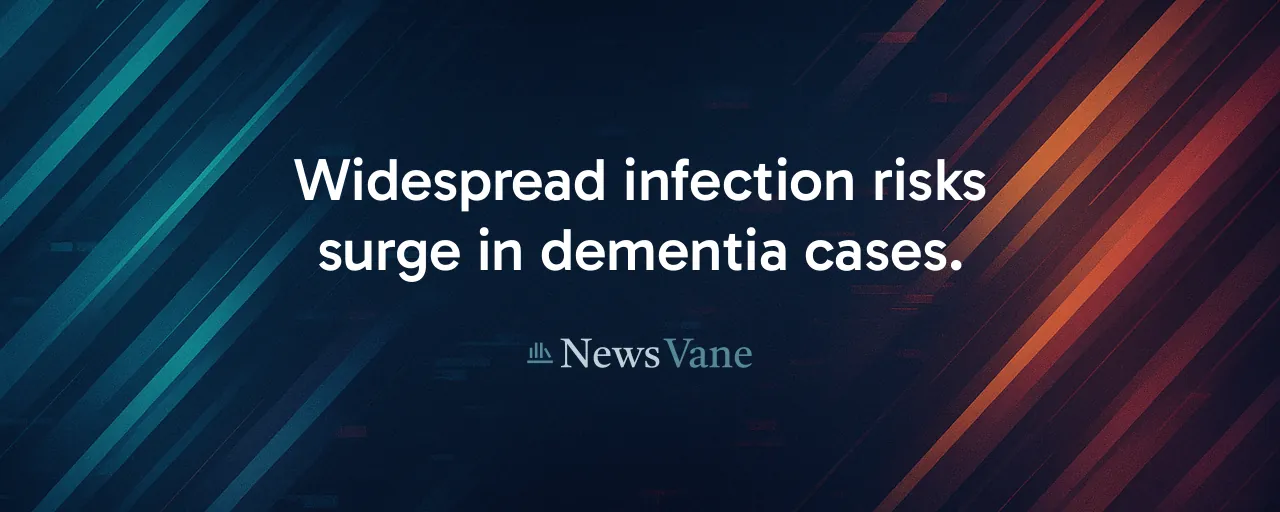A Startling Discovery
Recent studies have uncovered a troubling link between COVID-19 and brain health. Research published in Science Advances in July 2025 revealed that SARS-CoV-2, the virus behind COVID, can trigger Alzheimer's-like changes in the brain, even in those with no genetic predisposition. This finding confirms earlier fears that even mild infections may leave lasting neurological marks, raising alarms about a potential surge in dementia cases.
The evidence is striking. The virus accelerates the formation of amyloid-β plaques, a hallmark of Alzheimer's, in the retina, which acts as a window into brain health. This discovery, paired with reports of memory loss and cognitive decline in long-COVID patients, signals a public health challenge that calls for immediate attention. The question now is how to respond without sparking panic or division.
Unraveling the Science
The connection between COVID-19 and neurodegeneration is rooted in biology. Studies from 2024 and 2025 show the virus's spike protein interacts with neuropilin-1, a protein in brain cells, triggering amyloid-β buildup. This process mirrors early Alzheimer's pathology. Mouse models also reveal that the virus disrupts the blood-brain barrier, allowing inflammation to harm brain tissue.
Human data paints a similar picture. A January 2024 Nature Medicine study found that COVID survivors showed biomarker shifts equivalent to four years of brain aging. Functional MRI scans in October 2024 detected lasting connectivity issues in young adults after mild infections. These findings, consistent across global cohorts, underscore the virus's neuroinvasive potential.
A Window to the Brain
One promising development is the use of retinal scans to detect amyloid-β deposits. The retina, an extension of the central nervous system, offers a non-invasive way to monitor brain health. Research published in July 2025 demonstrated that SARS-CoV-2 induces these deposits in retinal tissue, providing a practical tool for early detection.
Scaling up retinal screening could transform how we track neurological risks. Unlike costly brain imaging, these scans are relatively affordable and accessible. Pilot programs could prioritize high-risk groups, such as older adults or long-COVID patients, while researchers refine the technology for broader use.
The Scale of the Challenge
The global reach of COVID-19 amplifies the stakes. With billions infected since 2020, even a small increase in dementia risk could lead to millions of new cases. A January 2025 study of 3,500 adults found higher dementia-risk scores among long-COVID patients, hinting at a looming burden. Caregiving costs, already straining families and health systems, could soar by hundreds of billions annually.
Social impacts are equally daunting. Cognitive decline could reduce workforce productivity and deepen inequities, particularly for communities hit hardest by the pandemic. Caregivers, often unpaid family members, face burnout risks as demand grows. These challenges call for proactive, balanced solutions.
Learning From the Past
History offers context for this crisis. The 1918 influenza pandemic led to post-encephalitic Parkinsonism, a neurological condition tied to viral infection. More recently, HIV and herpes simplex-1 have been linked to cognitive decline. These parallels informed early warnings about SARS-CoV-2's neurological risks, which were initially dismissed until 2021 MRI data confirmed brain changes.
The amyloid-β antimicrobial hypothesis, which suggests infections can seed Alzheimer's plaques, has gained traction. This framework, supported by COVID research, highlights the need for vigilance. Past viral pandemics show that long-term effects often emerge slowly, urging sustained monitoring.
Charting a Response
Addressing this threat requires practical steps. Expanding longitudinal studies, like those using UK Biobank data, can clarify dementia risks over time. Public-private partnerships could accelerate retinal screening and biomarker assays, making early detection widely available. Therapies targeting inflammation or amyloid buildup, such as neuropilin-1 inhibitors, show promise in early trials.
Equitable access is critical. Community-based clinics could integrate cognitive assessments into primary care, particularly for underserved groups. Policymakers might consider tax incentives to spur innovation in diagnostics and treatments, ensuring solutions reach those most in need.
Balancing Urgency and Caution
The evidence calls for action, and restraint is equally vital. Not all COVID survivors face lasting damage, and most cognitive issues resolve within a year for many. Overstating risks may stigmatize survivors or fuel unnecessary fear. Clear, transparent communication can promote vaccination and antiviral use without alienating the public.
Stakeholders, from neurologists to employers, need to collaborate. Health insurers could cover routine cognitive screenings, while workplaces might offer accommodations for those with long-COVID symptoms. These steps, grounded in data, help mitigate risks.
Looking Ahead
The link between COVID-19 and dementia is a wake-up call. Science has illuminated the virus's neurological toll, but the path forward hinges on collective resolve. By investing in research, detection, and equitable care, society is poised to confront this challenge before it overwhelms health systems and families.
The retina, a small but powerful window, symbolizes hope. It reminds us that complex problems often yield to innovation and focus. With millions of lives at stake, action is needed now, guided by evidence and a commitment to shared well-being.
This moment tests our ability to learn from science and history. By prioritizing early detection and targeted support, we protect brain health and build resilience against future threats. The stakes are high, and our capacity to rise to the challenge is equally significant.
